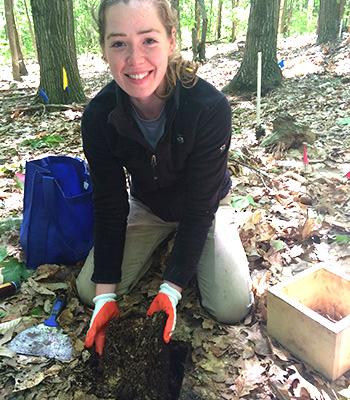Biological Nitrogen Immobilization as a Control on Soil Nitrogen Retention in Northern Forests

Long-term atmospheric nitrogen deposition has been shown to slow leaf litter and woody material, or lignin, decomposition in forest soils, resulting in an accumulation of soil carbon. Reduced decomposition has been accompanied by altered structure and function of soil fungal communities, the primary decomposers in forest ecosystems. A reduction in soil and litter manganese concentrations under nitrogen enrichment may explain these observations because manganese is an important nutrient for regulating lignin-decay enzymes produced by fungi.
NSRC researchers evaluated the effect of manganese on decomposition in soil and leaf litter collected from the Chronic Nitrogen Amendment Study at the Harvard Forest Long-Term Ecological Research (LTER) site in Massachusetts. Researchers found a significant positive correlation between manganese availability and enzyme activities in litter. They observed an increase in the relative abundance of “weak” fungal decomposers (e.g., yeasts) under long-term nitrogen enrichment and a reversal of this response with manganese additions.
Results suggest that higher manganese availability may promote fungal communities better adapted to decompose lignin. Manganese limitation plays an important role in decomposition dynamics under long-term atmospheric nitrogen deposition and may represent a mechanism that explains reduced decomposition and increased soil carbon accumulation under this global change factor. As northern forests respond to altered climate and nitrogen availability, this work provides understanding of the underlying mechanisms affecting long-term soil carbon storage in these systems.
